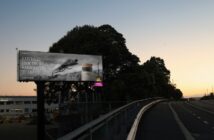In 2014, the Ford Ranger outsold the Toyota Hilux, ending the Japanese car brand’s 32-year run as the top-selling ute in New Zealand. And Ford has now gone on to show this wasn’t just a fluke by retaining its position at the top of the pile in 2015.
Final sales figures from 2015 showed that Ford sold 6,818 Rangers to the 5,623 Hilux vehicles sold over the same period.
What’s more is that the Ford Ranger rubbed further salt into Toyota’s wounds by also outselling the Corolla, which sold 6,520 units, for the first time last year.
“We’ve always said, we’d leave it up to the customer to decide and the Kiwi customer has well and truly decided,” said Corey Holter, the managing director of Ford New Zealand, in a release. “It’s a fantastic result for the Ford Ranger – not only being the number one ute but also the overall number one vehicle. It’s a huge milestone for the vehicle and the company.”
The Ford Ranger’s sales figures also lifted year on year by 473 units from the 6,345 recorded in 2014.
When the Ranger usurped the Hilux in 2014, it occurred at a time when Ford released a new model—which could have given the car brand an advantage.
However, at the end of last year, Kiwis showed that they aren’t necessarily always drawn to what’s newest. Despite the new Hilux being launched in December, the Ford Ranger still outsold its competitor by selling 608 units to the 419 sold by Toyota.
At the time of the launch of the new Hilux, Toyota released a high-budget brand ad via Saatchi & Saatchi featuring animals actively approaching hunters and fishermen in an effort to get a ride on the vehicle.
Following social media outrage in response to the references to hunting, Toyota decided to pull the ad in the lead up to the Christmas break (StopPress contacted Toyota for a comment, but we are yet to receive a response*).
Ford, having launched an international brand campaign in the local market at roughly the same time, would no doubt have benefitted from the decision by Toyota to pull its creative.
Interestingly, the competitive playing field for utes has over the last few years shifted from the rural to urban markets as metro consumers opt for utes and SUVs rather than sedans (this could also explain why the Ranger outsold the Corolla).
In briefing Saatchi for the campaign for the new Hilux, Toyota general marketing manager Andrew Davis said that it was particularly important that the new campaign appealed to urban consumers.
“This ute continues this legacy and also delivers on the increasing urban appetite for utes and Kiwi’s love of the great outdoors, so it was important that the latest campaign spoke to this emerging group of city dwellers,” Davis said in an earlier release. “We presented Saatchi & Saatchi with a significant challenge in continuing the Hilux story, and we are excited with the final result which resets the benchmark and befits the legacy of Hilux.”
And Toyota isn’t the only car manufacturer looking to tap into the urban market.
VW general manager Tom Ruddenklau recently also spoke about the importance of the launch of the new Amarok model later this year in the context of attracting urban consumers.
“The ute is really important here because it stands for the emotional connection Kiwis have with heartland New Zealand,” Ruddenklau said. “And heartland New Zealand is not where the market is, but it’s where the hearts and minds of New Zealanders are. So, we sell an enormous number of utes in the metro areas, because it’s Kiwis’ way of keeping that connection and also because our lifestyles are such that there’s a lot of towing of boats, mountain-biking and fishing.”
*Saatchi & Saatchi deferred comment to Toyota.
UPDATE: Toyota’s general manager of new vehicle sales Steve Prangnell sent through the following comment: “Our primary focus has always been on the game plan, not the scoreboard. Both Hilux and Corolla exceeded their sales objectives last year, contributing to our 28th year of market leadership, an increase in passenger market share and leadership in all four sales channels. The objective remains the same for 2016 – to meet the sales objective for each model across our range and continue to provide a good return to our dealer network.”




